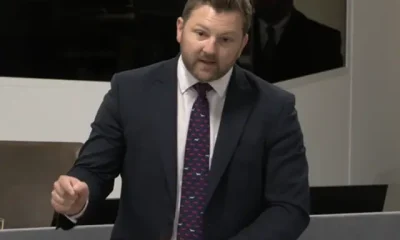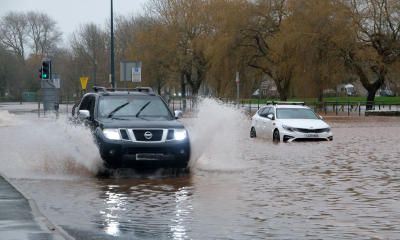Farming
Satellite data for efficient water resource management in agriculture

Making the most of water in farming is key to keeping food supply sustainable and protecting the environment. By using water wisely and precisely instead of overapplying it, farmland owners can stop soil from wearing away and grow more crops, helping to meet the rising need for food around the world.
This is where remote agriculture monitoring solutions are needed. Satellites provide farmers with real-time insights into soil moisture levels, crop health monitoring, and weather conditions, enabling precise irrigation strategies. Such a far-from-traditional approach not only conserves water but also boosts agricultural productivity. Farm monitoring software can continuously monitor soil moisture levels and make farming more efficient and resilient, securing future food supplies while minimizing water waste.
By leveraging satellite technology for remote soil moisture monitoring, farming can become more efficient and resilient, securing future food supplies while minimizing water waste.
Why it’s important
In agriculture, soil moisture analytics of the field helps to manage water efficiently for sustainable farming. Therefore, crops get the right level of water. Good management increases crop production by allowing the correct level of water to be applied on the crops and stopping the stresses on the plants due to low or high water levels, making them stressed or washing out some nutrients useful for growth. By tapping into advanced satellite soil moisture analytics, farmers are empowered to make data-driven decisions leading to healthier plants and productive harvests.
Beyond returns, efficient water use continues to be sustainable considering that it makes sure the availability of water resources is conserved and also that the soil remains fertile and productive for future planting seasons. Proper water management also takes care of environmental conservation: it ensures that ecosystems are not destroyed and that biodiversity is maintained, mitigating the effects of climate change. For example, lesser instances of water wastage and runoff protect local rivers and lakes from the destruction of habitat for wildlife.
In essence, efficient water resource management, underpinned by smart soil moisture analytics, is about more than just growing crops — it’s about nurturing a sustainable future. By optimizing water use, we ensure abundant harvests, safeguard our environment, and build resilient agricultural systems for the years to come.
How satellite data enhances water resource management
Irrigated agriculture today accounts for a staggering 70% of all freshwater withdrawals globally. However, not all of this water nourishes crops. In traditional systems, over 50% often returns to rivers or groundwater, unused by plants. This return flow, while reusable downstream, highlights inefficiencies in water use.
Monitoring water productivity in agriculture — how much crop is produced per unit of water — is essential for improving these efficiencies. Advancements in earth observation technology, particularly monitoring soil moisture using remote sensing, now make it possible to track critical data for sustainable agricultural practices and natural resource management.
Evapotranspiration, which encompasses both soil evaporation and plant transpiration, can be measured via satellites. Similarly, plant growth and health are accessible through this technology. By increasing crop biomass or reducing water usage, we can enhance water productivity. This progress is vital for ensuring sustainable water use in agriculture and securing food supplies for an ever-growing population.
Example of successful implementation
The application of remote sensing in soil moisture management has already proven its effectiveness through different cases. Let’s discuss some of them.
Australia’s Murray-Darling Basin
In Australia, the Murray-Darling Basin is a critical agricultural region where water scarcity is a persistent challenge. By utilizing satellite data to monitor soil moisture and evapotranspiration, farmers have been able to optimize irrigation schedules. This has resulted in a 20% increase in water use efficiency, reducing overall water consumption while maintaining crop yields. The benefits include enhanced water conservation and improved crop productivity, ensuring the region’s agricultural sustainability.
California’s Central Valley
In California’s Central Valley, satellite data has been used to monitor crop health and soil moisture. This information allows farmers to implement precision irrigation, targeting only the areas that need water. As a result, water usage has decreased by 30%, and crop yields have increased by 15%. The implementation of these technologies has led to significant water savings and improved agricultural output, demonstrating the power of satellite data in modern farming practices.
Primo Principio and EOSDA Crop Monitoring
Primo Principio, an Italy-based company, has made strides in improving vineyard management using the EOSDA Crop Monitoring platform. Grapes, a particularly demanding crop, require meticulous irrigation and disease prevention efforts. In Italy, where weather patterns are unpredictable, Primo Principio’s model has helped farmers receive timely alerts about water and disease stress in their fields, aiding in irrigation and crop treatment decisions.
However, the need for a more precise approach led Primo Principio to adopt EOSDA Crop Monitoring. This platform provides detailed soil moisture maps and other critical data, enabling early detection of plant stress and more accurate irrigation and treatment processes.
With EOSDA Crop Monitoring, Primo Principio has enhanced its model to deliver geo-specific information, pinpointing areas within fields experiencing issues such as pests or extreme weather. This precision is crucial for effective irrigation and disease prevention. The integration of Variable Rate Application (VRA) maps, which include vegetation indices like NDVI and NDMI, has further refined their approach, allowing for precise liquid spraying and treatment applications.
Since May 2023, Primo Principio has been using EOSDA Crop Monitoring, receiving positive feedback from their clients. Approximately 30 clients, managing fields ranging from 0.17 to 104 hectares, now benefit from the platform. Weekly or bi-weekly reports featuring multi-layered maps provide detailed insights into vegetation and moisture levels, helping farmers make informed decisions. This innovative approach has empowered farmers to apply treatments and irrigation more precisely, enhancing water productivity and sustainability in Italian vineyards.
Challenges and solutions
It is with satellite-based remote sensing that the efforts towards the study of peatlands have been revolutionized, providing a huge extent of detailed views over such complex ecosystems. Due to the wide coverage characteristic of satellite-based remote sensing, together with cost-effectiveness and seasonal and spatial variation capture, it is unrivaled for peatland mapping, vegetation monitoring, and estimation of carbon stocks.
However, challenges remain regarding the enhancement of in situ calibration and validation, local factor integration, and detailed in situ data. This demands that the right vegetation indices, spectral bands, and processing techniques are utilized to ensure effective crop monitoring.
There are, however, lingering problems in classifying accuracies, penetration into vegetation, and quantification below ground. Improvement in technology is required to integrate data from multiple sensors, with better algorithms, and validation on the ground with site-specific makes consideration.
In this regard, the upcoming hyperspectral satellite missions like EnMAP, PRISMA, and CHIME hold great promise for peatland monitoring. These datasets can enable species-level analysis, but precise measurement of key plant spectral properties is essential to unlock their full potential.
Farming
Basic Payment Scheme 2025 balance paid to 95% of Welsh farmers
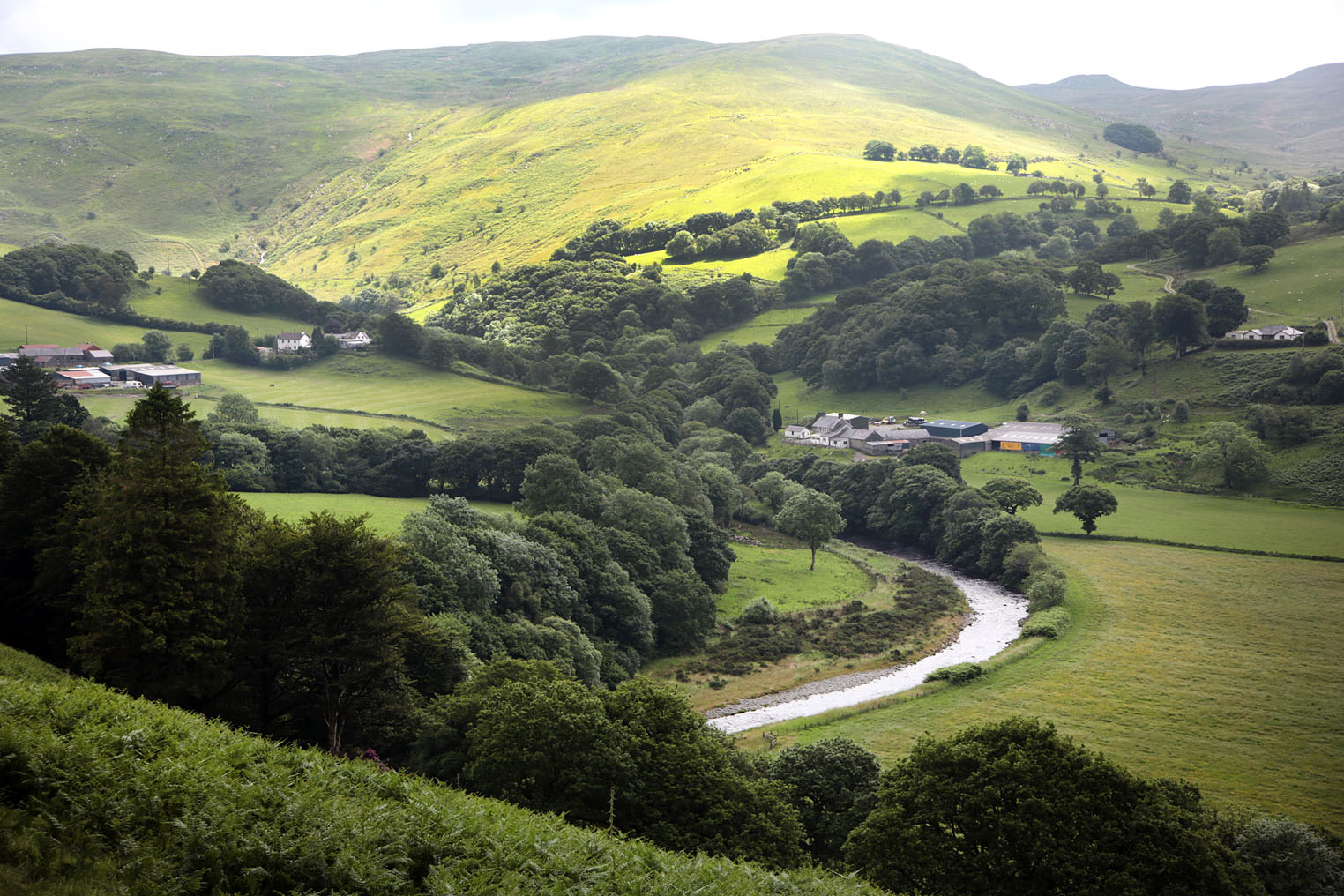
Final year of BPS as transition to Sustainable Farming Scheme begins
The WELSH Government says more than ninety-five per cent of farm businesses have now received their full or balance payment under the final year of the Basic Payment Scheme (BPS), ahead of the introduction of the new Sustainable Farming Scheme (SFS) in 2026.
Announcing the update on Friday (Dec 12), Deputy First Minister and Cabinet Secretary for Climate Change and Rural Affairs, Huw Irranca-Davies, confirmed that over 15,400 Welsh farm businesses have been paid £68.7m. This comes on top of the £160m issued in BPS advance payments since 14 October.
Final round of BPS payments
The Basic Payment Scheme, which has been the backbone of farm support in Wales for a decade, provides direct income support to help farmers plan and manage their businesses. BPS 2025 marks the last year in which full BPS payments will be made before the scheme begins to be phased out.
The Cabinet Secretary said officials would “continue to process the outstanding BPS 2025 claims as soon as possible,” adding that all but the most complex cases should be completed by 30 June 2026.
Payments issued today represent the main balance due to farmers following earlier advances, giving many businesses the cash flow they need during the quieter winter period—traditionally a challenging time in the agricultural calendar.
Shift to Sustainable Farming Scheme in 2026
From 1 January 2026, the Welsh Government will begin rolling out the Sustainable Farming Scheme, a major reform to how agricultural support is delivered. The SFS will reward farmers for environmental outcomes such as habitat management, carbon reduction and biodiversity improvements, alongside continued food production.
The government has argued that the new scheme is essential to meeting Wales’ climate and nature targets while ensuring long-term resilience in the sector. However, the transition has been closely watched by farming unions, who have raised concerns about the administrative burden, income stability, and the speed at which BPS is being phased out.
Mr Irranca-Davies reaffirmed the government’s stance, saying: “This government is steadfastly committed to supporting Welsh farmers to sustainably produce quality food. This is demonstrated today in our payment of the BPS 2025 balance payments and will continue throughout the transition period.”
Sector reaction
Farming unions are expected to scrutinise the detail of today’s announcement, particularly around remaining unpaid cases. Last year, late payments led to frustration in parts of the sector, with unions calling for greater certainty as the industry faces rising input costs, supply chain pressures and continued market volatility.
The move to the SFS remains one of the most significant agricultural policy changes in Wales since devolution. Ministers insist the shift is designed to support both food production and environmental stewardship, while critics warn the transition must not undermine farm viability—especially for family-run livestock farms that dominate rural areas such as Pembrokeshire, Ceredigion and Carmarthenshire.
What happens next
Farmers still awaiting their BPS 2025 balance will continue to be processed “as soon as possible”, the Welsh Government said. Officials will also publish updated guidance on the Sustainable Farming Scheme ahead of its launch.
The coming year will therefore become a pivotal moment for Welsh agriculture, as the long-standing BPS framework—which provided over £200m annually to Welsh farmers—makes way for a new results-based model that will shape the industry for decades to come.
Community
Wolfscastle farm’s new shed sparked ‘noise nuisance’ claims
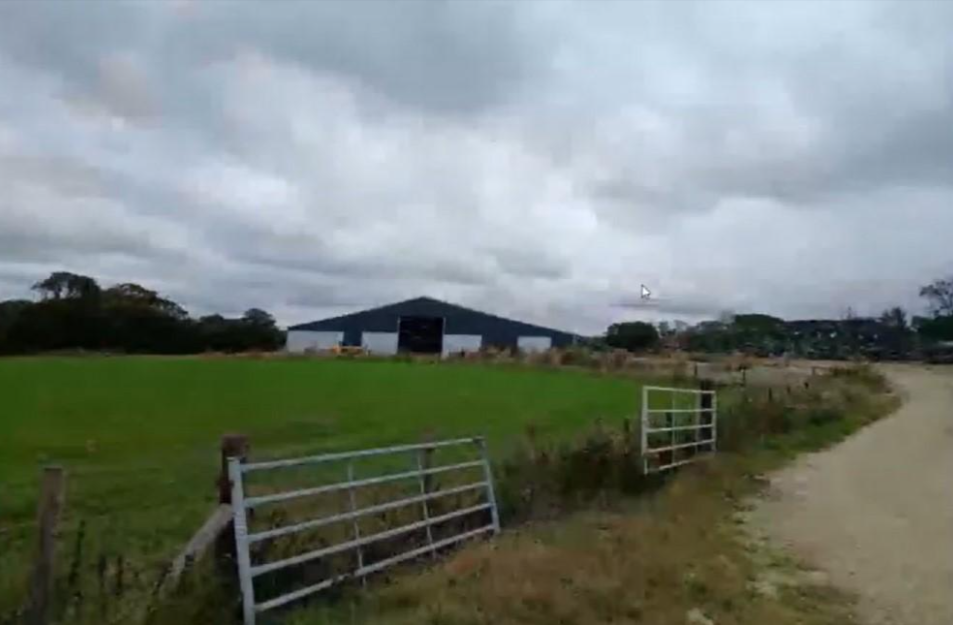
A PEMBROKESHIRE farmer “jumped the gun” in his enthusiasm to build a new cattle shed which includes ‘robot slurry scrapers’ that have been causing a noise nuisance for neighbours, county planners heard.
In a retrospective application recommended for approval at the December meeting of Pembrokeshire County Council’s planning committee, Aled Jenkins sought permission for a replacement cattle housing and silage clamp at Upper Ty Rhos, Wolfscastle.
An officer report said Upper Ty Rhos consists of a herd of 630 youngstock beef cattle, the applicant seeking permission for the replacement 100-metre-long cattle housing building.
It said the building benefits from a robotic scraping system to internally clean it to improve animal welfare and efficiency.
However, the slurry scraper system in operation has been found to constitute a statutory noise nuisance.
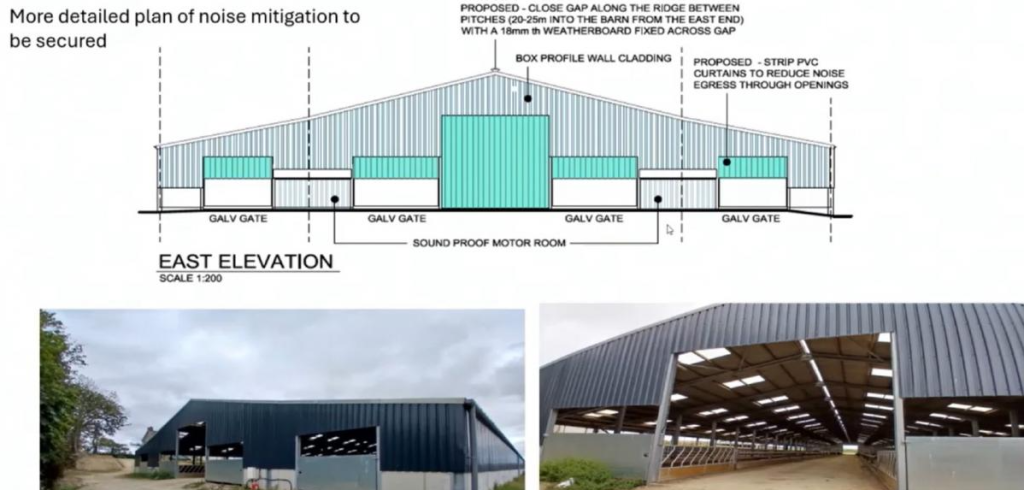
“The introduction of the slurry scraper system has resulted in a new noise source to the locality that is having a significant detrimental impact upon local amenity. The nuisance noise is directly associated with the extended hours of operation of the slurry scraper system and the noise created by the two motors powering the system including the drive mechanism that moves the scraper through the building to remove slurry produced by the housed cattle.
“To further exacerbate the situation, the building has open voids to the eastern gable end, which is within close proximity to the neighbouring property resulting in the building being acoustically weak.
“An acoustic report has been submitted with mitigation methods provided including relocating motors and associated equipment into external enclosures, reduction of noise egress through openings by installing hit-and-miss louvres and/or PVC strip curtains and consideration of blocking the gap between roof pitches along the ridge of the building.”
Three letters of concern were received from members of the public raising concerns including visual and environmental impact, noise issues and a potential for the herd size to increase.
Speaking at the meeting, neighbour Dr Andrew Williams, who stressed he was not seeking to have the shed removed, raised concerns about the noise from the ‘robot scrapers,’ exacerbated by cattle being concentrated in the immediate area from the wider farm complex.
Agent Wyn Harries addressed concerns about the retrospective nature was a result of over-enthusiasm by his client who “jumped the gun”.
He said there was now a scheme that was “fully worked through,” dealing with noise and other issues.
Members backed approval, which includes noise mitigation to address the impact of the robot scrapers; one member, Cllr Tony Wilcox, abstaining on the grounds of the retrospective native of the building “the size of a football field”.
Farming
FUW urges government action as plunging dairy prices threaten family farms
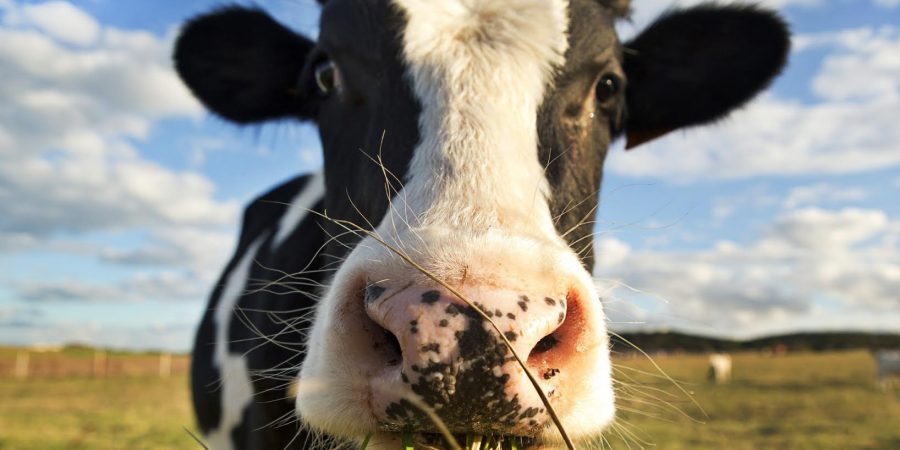
THE FARMER’s UNION OF WALES has sounded the alarm over a sharp and sustained collapse in dairy prices, warning that the situation is placing intolerable pressure on family farms already grappling with regulatory change, rising costs and wider economic uncertainty.
The Union convened an emergency meeting of its Animal Health and Dairy Committee last week to assess the scale of the crisis. Representatives from across Wales reported widespread anxiety, with many members seeing milk prices fall dramatically through the autumn. Processors are now signalling further cuts in early 2026, while commodity markets offer little sign of stability heading into spring.
Farmers, fearful of jeopardising commercial relationships, have approached the FUW confidentially to express grave concern about projected milk payments for the coming months. Many say the offers being made will fall far below the cost of production.
Average milk prices are forecast at just 30–35 pence per litre, against estimated production costs of 39–44 pence per litre (Kite Consulting). On current trajectories, the FUW warns a typical Welsh dairy farm could lose thousands of pounds per month for as long as the downturn persists.
Following its committee meeting, the Union raised the matter directly with Deputy First Minister Huw Irranca-Davies MS during talks in Cardiff on Wednesday, December 3. Officials stressed the immediate threat facing family-run dairy farms and called for urgent consideration of government support to prevent long-term damage to the sector.
Gerwyn Williams, Chair of the FUW Animal Health and Dairy Committee, said the pace of the price crash was “unprecedented”.
“Farmers are facing an impossible situation where input costs remain high while the value of their product plummets. The viability of many family farms is now at serious risk. We need immediate assurances that this crisis is being treated with the urgency it deserves.
“Some can weather a short storm, but rumours that this could continue into summer 2026 will see businesses shut. These modest family farms have already invested heavily to meet regulatory requirements. Cuts on this scale will severely impact their ability to service repayments.”
FUW Deputy President Dai Miles warned that the consequences extend far beyond farm gates.
“Dairy farming underpins thousands of jobs in Wales and is central to the economic, social and environmental fabric of rural communities. When prices fall this sharply, it isn’t just farmers who suffer — local businesses, services and entire communities feel the impact.
“We have made it clear to the Deputy First Minister that government must work with the industry to provide immediate stability and a long-term resilience plan.”
The FUW says it will continue to work with the Welsh Government, processors and supply-chain partners to seek solutions and secure fair, sustainable prices for producers.
-

 Crime5 days ago
Crime5 days agoPhillips found guilty of raping baby in “worst case” judge has ever dealt with
-

 Crime4 days ago
Crime4 days agoKilgetty scaffolder sentenced after driving with cocaine and in system
-

 Crime4 days ago
Crime4 days agoHousing site director sentenced after failing to provide breath sample following crash
-

 Crime4 days ago
Crime4 days agoMotorist banned for three years after driving with cannabis in system
-

 Education3 days ago
Education3 days agoTeaching assistant struck off after asking pupil for photos of her body
-

 News6 days ago
News6 days agoJury retires tomorrow in harrowing Baby C rape trial
-

 Crime4 days ago
Crime4 days agoMilford Haven pensioner denies exposure charges
-

 Local Government6 days ago
Local Government6 days agoNew defamation row erupts after anonymous website targets Herald editor















